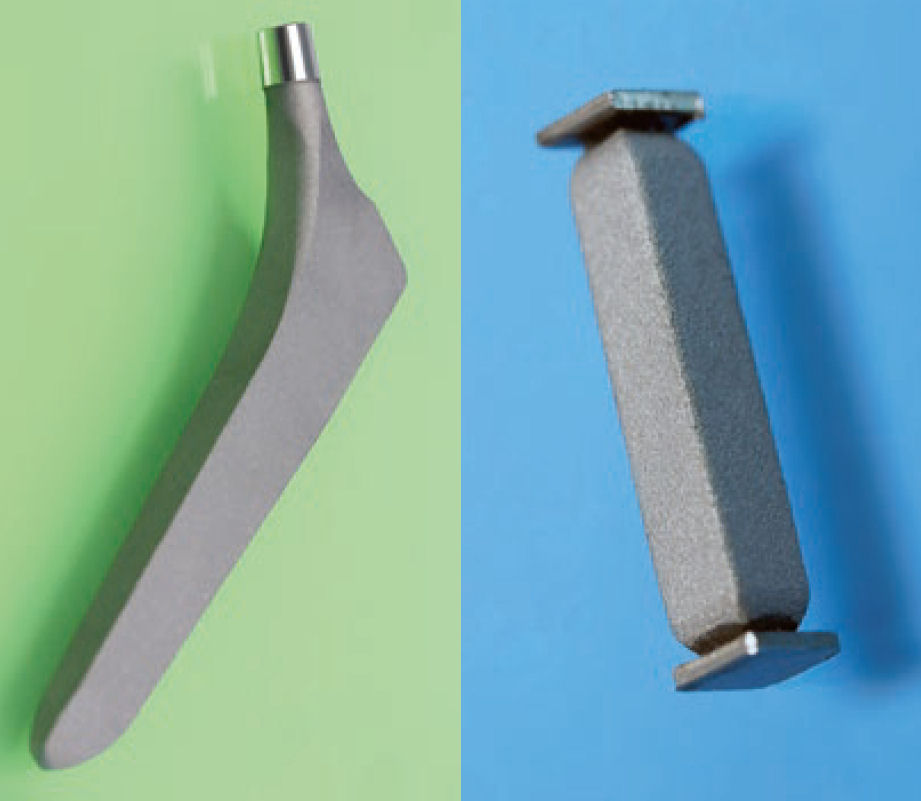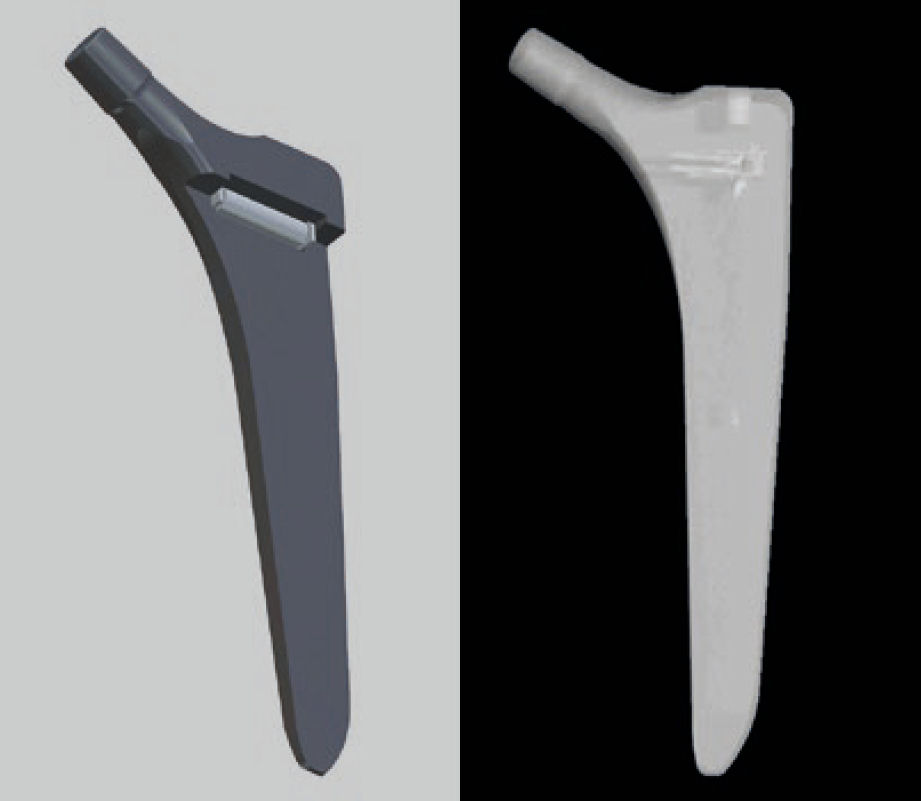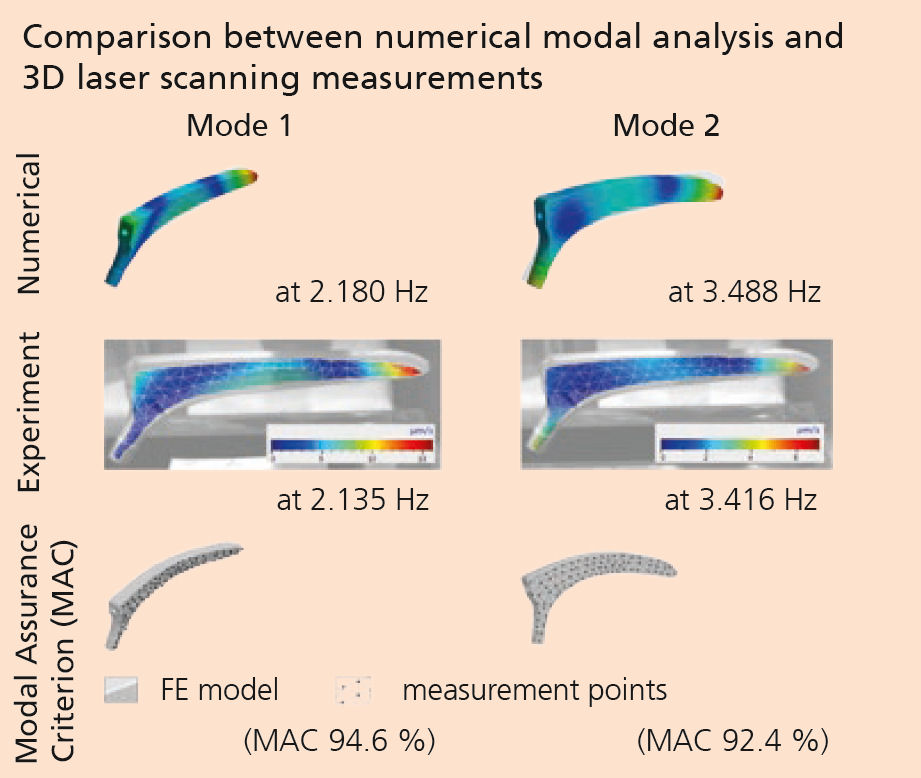
Theranostic implants - Smart functionalization and monitoring
Current research



One of the biggest challenges within the leading project “Theranostic Implants” was the development (Fraunhofer IKTS), as well as the embedding within a hip implant (Fraunhofer IWU), of actuators and sensors for the detection of relaxation, the non-invasive activation of the reanchoring, stimulation of the healing process and timely detection of misloading and overloading by means of permanent monitoring.
The material- and form-fitting integration of temperature-sensitive actuators and sensors into metallic monolith bodies with complex shapes keeps posing a problem for which the available solutions are not fully satisfactory. On the one hand, these components require the optimal fit of form and material so that the gradients to be measured (force) are coupled with the sensor with as little loss as possible; the same applies to the integration of the gradients into the functional form body. On the other hand, the sensors and actuators have to be protected against any energy influx during the embedding process to achieve material- and form-fitting interfaces with the form body.
Such a strategy requires that the actuator be covered or coated by a thermally acting protective system consisting of multiple materials/layers, preferably made from ceramic and metallic material components. The integration interface between actuator-sensor system and form body is designed in such a way that the main flux of energy focuses topically on the interface and the energy is diverted away from the actuator-sensor system or distributed spatially, eventually resulting in a reduced energy influx into the zones of the temperature-sensitive components.
Using wireless energy transmission, it was possible to stimulate the implant acoustically. The resulting oscillations measured conformed well with the computer simulation. In addition to the active surface functionalization realized, energy self-sufficient operation in an inverse mode with the actuator as energy harvester is also possible. This enables an online/in-line structure health monitoring process as an early warning system, for safety and service beyond medical applications.
